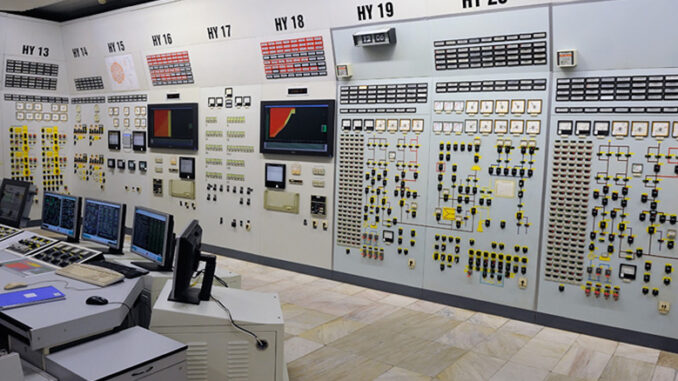
Although the visit is considered purely diplomatic, signalling that Russia is not isolated, Vietnam signed an important agreement during Putin’s 20-hour visit to Vietnam.
President of the Russian Federation, Vladimir Putin, arrived in Hanoi early on 20 June, and returned home the same day. Following his trip to North Korea on 18-19 June, Vietnam became his second and final destination to strengthen relations with its few allies in the region.
As for Vietnam, despite being solemnly welcomed with a 21-gun salute and talks with Vietnam’s chief leaders, including the President, the Prime Minister, and the Party General Secretary, however, the visit is assessed by experts only to show that Russia is not isolated in the international arena, especially after the 3-year war with Ukraine, as well as the sanctions from the US and the West.
Although the visit was criticised by the US and the West, Vietnam seemed to have its own reasons, considering that the visit would not cause too much negative impact on relations that had just been upgraded to a comprehensive strategic level established with the US at the end of last year.
Of the 11 documents signed between the two sides, most are related to the fields of oil and gas, higher education, and finance. However, one particularly noteworthy document focuses on Russia’s support for Vietnam in implementing the Nuclear Science and Technology Research Centre project. This includes helping to build a new 10 MW research reactor and cooperation in training human resources for the nuclear industry.
Vietnam once had to halt its ambitious nuclear power project in 2016, especially after facing a wave of protests from both its people and experts. Ninh Thuan then has been transformed into a renewable energy centre (wind power, solar power).
Vietnam’s decision to sign a nuclear energy agreement with Russia suggests a shift in its energy strategy. This move may be driven by recent energy shortages, which have discouraged major foreign investors in the sector.
Last year, Intel decided to shelve its investment expansion in Vietnam. This was a big loss for Vietnam because the factory there is Intel’s largest for assembling, packaging, and testing chips. Intel has invested a total of $1.5 billion in Vietnam so far, and its expansion plans could have nearly doubled the chipmaker’s operation there. A source revealed to Reuters that the main reason for this decision is because Intel is concerned about electricity shortages as well as excessive bureaucracy in Vietnam.
The news of the blackout caused a stir in Vietnamese media, with state media moving swiftly to assure foreign companies in Vietnam by issuing a statement that denied the reports and downplayed the concern.
Power shortages for production are so common in Vietnam’s dry season that foreign businesses spoke out about power cuts in March of this year, causing a major impact on their operations.

In recent years, Vietnam has significantly invested in renewable energy sources like wind and solar power. However, the domestic energy industry still faces many obstacles. Internal conflicts, particularly over policies, are said to be the cause of this. These conflicts have slowed down the connection of renewable energy projects to the national grid.

Michael Nguyen, a Vietnamese-Singaporean businessman, wrote on BBC Vietnamese, “EVN (Vietnam’s national power company) does not accept power plants with newly generated renewable energy capacity to be connected to its power grids due to concerns about the safety and stability of the entire system. The high share of renewable energy, mainly wind and solar power, has created challenges for grid stability. These challenges include low system inertia, transmission congestion, excess capacity, and forecast errors. Large deviations, risk of faults passing through, and a low short-circuit current ratio can all contribute to instability”.
Additionally, Vietnam faces challenges in integrating renewable energy due to mismatches between supply and demand. As an expert has pointed out, “there are some paradoxes where there is high potential for sun and wind, but low demand for electricity. Therefore, utilising this energy source requires significant investment in electricity transmission or storage systems.”
That may explain why Vietnam signed a nuclear agreement with Russia. It addresses the need for stable energy, supporting the economy and overcoming the limitations of renewable energy (which cannot proactively generate electricity full-time and requires investment in transmission systems). Vietnam aims to master nuclear power technology, thereby boosting its first nuclear power plant project and benefiting other fields such as science. Simultaneously, Vietnam wants to avoid falling behind regional countries like Thailand and the Philippines.
Two nuclear power plant projects in Ninh Thuan, each with a capacity of about 2,000 MW, have been postponed. While the Ninh Thuan nuclear energy project was halted by the Vietnamese National Assembly, the designated site for the Ninh Thuan 2 plant project retains its land-use designation. This means it could be readily available for construction. This is particularly relevant considering the recent statement from the Minister of Industry and Trade Nguyen Hong Dien. He indicated to National Assembly delegates that the project was only suspended, not cancelled, implying Vietnam’s intention to build its first nuclear power plant when policies change.
Buu Nguyen
Buu Nguyen (full name: Nguyen Quoc Buu) is a graduate student at Nan Tien Institute (Australia).
Banner: A view inside the control and monitoring room of Unit 5 of the Kozloduy Nuclear Power Plant, Russia. Copyright © 2009 Yovko Lambrev. Creative Commons Attribution. Wikipedia Commons
